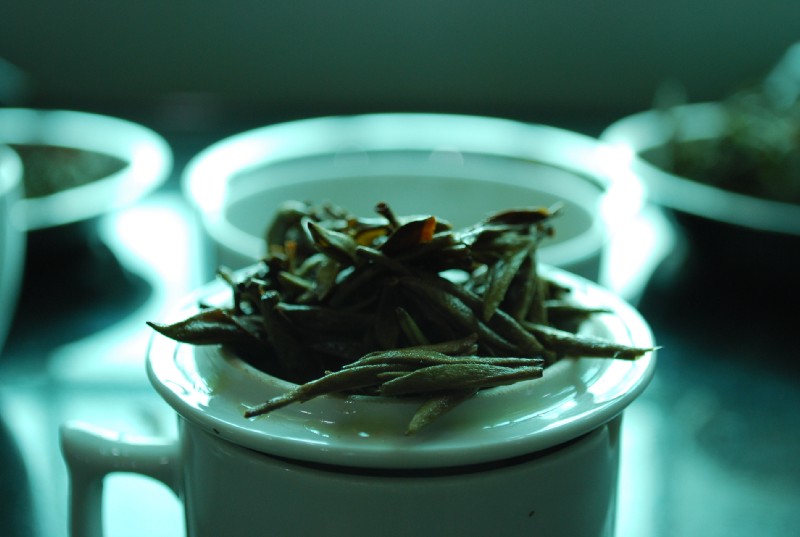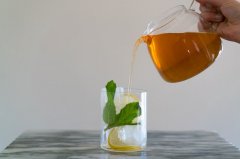How to select high-quality tea and share the leaf bottom after brewing to distinguish between good and bad tea
The bottom of the leaf contains a lot of information about the tea you drink. They are often ignored and discarded. Take a closer look at the wet leaves. It can tell you more about its quality and how it is picked and processed. With some of the tips we share in this article, you can judge the quality of tea without even having to taste it. Learning to taste tea can make you a better tea buyer. This is especially useful when you are lucky enough to taste the tea before you buy it. Imagine going to the tea shop to buy some good tea. The first thing you find is that there are too many choices. It's easy to ask the shopkeeper to recommend something to you. But what's the hurry? It's normal to ask the boss to prepare tea for you. When you taste tea, you have a chance to look at the brewed tea! In addition, the shopkeeper will think that you are an expert and start to buy you good things without offering outrageous prices. To start the experiment yourself, first make some tea in hot water until it fully unfolds. Then spread the leaves on the plate. There are bubbles on the soaked tea leaves. Sometimes you will see small bubbles on the soaked tea leaves. This is usually caused by the high temperature during baking, which indicates that most teas have problems in the production process. If you taste it first and buy it later, you should avoid the tea. But for teas like rock tea and some yellow tea, this is a good sign. The bubble on rock tea is called "frog back" in China. "Frog back" refers to the dry brewing of oolong tea, especially Wuyi rock tea. It refers to the white spots on the dry leaves that look like sand grains, and the blistering bubbles on the prepared rock tea leaves that look like the bulging back of a frog. The frog back on rock tea is caused by the traditional long-time baking process. If you don't look carefully, it's usually hard to find it on the green-brown dry leaves. Yellow tea is another kind of tea in which bubbles can be seen. The term is used to describe scorched spots the size of fish eggs on dried tea leaves and small bubbles on soaked yellow tea leaves. Yellow tea needs to be baked at high temperature. due to the high temperature in the baking process, it will produce spots the size of fish eggs. In short, the bubbles on tea are usually a sign of poor processing of tea. In order to improve production efficiency, processing quality is often sacrificed. However, for yellow tea and Yan tea, these round spots can be considered the normal result of tea production.

Seeing bubbles on a black spot is not as bad as seeing a black burn point. For green tea, if you can sometimes see obvious black spots or small black spots on the brewed tea. This means that in the roasting process, either the temperature is too high or the technical content is low. A small number of black burn spots is not a problem, but you should not see too much. Silk-shaped on some dried or brewed black tea leaves, you can see that the veins part of the leaves separate from the leaves, looking like loofah. This is usually caused by excessive accumulation in the production process, which is not the best state of tea. Avoid this kind of tea. With the increase of brewing times, high-quality tea will gradually unfold and finally fully expand. This kind of tea has good craftsmanship and stable aging. It is also a sign that it can be soaked many times and the tea still tastes good. If the tea leaves are fully opened soon after soaking, it is likely to be made of rough or aged leaves, and the taste will fade after a few soaks. If, after many brewing, the leaves still do not unfold, or do not expand to a very small extent, we can be sure that this is due to problems in the production process, such as overheated roasting and the wrong environment during the aging period. This kind of tea usually dries the throat and makes it uncomfortable. The fewer pieces of tea are soaked as a whole, the better the tea will be. After brewing, good tea will show a beautiful and tidy appearance. Elasticity and flexibility pinch the soaked tea with your fingers and feel its elasticity and elasticity. If the level of elasticity and flexibility is high, it shows that the tea is tender and the production process is suitable. In addition, if this characteristic is found in brewed Pu'er tea, it also indicates a good natural aging process. If the brewed tea feels dull and inelastic, it means that the tea is very old, or the process of making the tea is poor. The color of brewing tea is mainly related to Pu'er tea. For the recently born Pu'er tea, the brewed tea is relatively fresh and green. Good raw Pu'er tea will ferment well at proper temperature and humidity, and the brewed tea will be bright orange. If Pu'er tea is stored in a humid and poorly ventilated environment, the leaves of Pu'er tea will not turn yellow or red even after decades of storage. If the tea is not fully fermented, the brewed tea will become black and rough. Too strong aroma good tea should always have a light fragrance. Any strange smell may mean that there is something wrong with the tea. A very obvious smell can indicate artificial seasoning and adding aroma. It does take some experience to judge the quality of brewing tea. If the tea is burned out during the production process, it is usually accompanied by a strong mixed smell of smoke and fire. When it comes to Pu'er, it will lose its good natural aging ability. Impurities in tea are also the cause of peculiar smell and bad taste. It is also harmful to health. This can happen if farmers are dishonest and add something else to make the tea heavier. In this case, for the sake of your health, we suggest you give up this kind of tea.
Important Notice :
前街咖啡 FrontStreet Coffee has moved to new addredd:
FrontStreet Coffee Address: 315,Donghua East Road,GuangZhou
Tel:020 38364473
- Prev

How to drink black tea correctly? Can you add sugar, milk and ice after brewing black tea?
How to make the best tea? For regular tea drinkers, the general guideline for brewing black tea is to brew a cup of regular-sized hot water (6 ounces) with 2-3 grams of tea leaves. The water temperature is kept at 90℃, and the tea leaves are brewed in an airtight container for 3-5 minutes. However, these general instructions may not apply to you.
- Next
The origin story of advanced Phoenix Dancong duck shit fragrance processing characteristics and correct brewing method of duck shit incense
If you want to compete with strange tea names, duck shit fragrance may at least be in the top three. When you hear the name, you must be curious: does it look or smell like duck shit? Is it similar to Kopi Luwak? Let's see! The origin of the name duck shit incense there are several versions of the origin of the name. A stream
Related
- What effect does Italian American coffee with filter paper have? Will coffee taste better if it is put on filter paper at the bottom of the powder bowl?
- What is the color difference in coffee beans? What are the characteristics of honey processed coffee beans? Why are the anaerobically treated coffee beans uneven in color?
- How does novice Xiaobai quickly get started and make coffee? Newbies learn to make coffee by hand and share the specific steps and process process!
- Costa tea has a shelf life of 100 years?! Expert: Unable to verify
- It's a huge uproar! American milk addition was rejected by Manner employees?!
- Mocha pot coffee bean recommendations| How fine and how much powder should be used for grinding? What parameter ratios do I need to use to make milk with Mocha pot coffee?
- What are the characteristics of the world's top ten coffee beans treated with Costa Rica honey? How to make black honey kadura from Tarazhu Pilon Processing Plant taste good?
- How to make deep-roasted coffee? What grinding water temperature does authentic Jamaica Blue Mountain No. 1 coffee use to brew it well?
- Selected high-grade rose summer coffee flavor tasting guide Why Panama rose summer has the aroma of flowers and fruits
- What equipment does a novice Xiaobai need to buy to learn to make coffee? Filter cup electronic scale bean grinder manual flushing pot purchase guide

